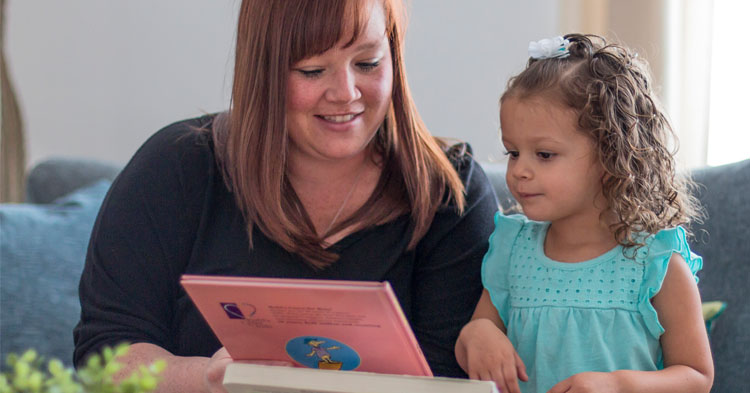“Where we love is our home—home that our feet may leave, but not our hearts.”
— Oliver Wendell Holmes
What does the word home make you think about?
For many of us, home means comfort, safety, warmth and familiarity. It is a place where we can truly be ourselves and enjoy close relationships. A home is a safe haven and a place of predictability in an unpredictable world.
Families often choose a family child care setting as a home-away-from-home for their young child. They are looking for a nurturing and safe place for their child. For this reason, it’s important for family child care providers to cultivate a setting that maintains its sense of home.
Decorating your space
A family child care should look like a home, not a child care center. Although it may be tempting to remodel your home’s living room into a preschool classroom with labeled interest centers, plastic tables and chairs, colorful shapes posters and circle-time carpets, doing so takes away from the very quality that differentiates your program from the center-based setting. When selecting furniture and materials for your child care program, consider vendors that will keep your environment homey. Furniture for your child care program doesn’t need to come from an early learning vendor. There are many vendors who offer furniture for home settings that work well for your program and meet your needs while maintaining your home’s natural feel.
Another consideration are the materials of items. Natural colors, wood and upholstered furniture, woven rugs and baskets enhance your home’s sense of warmth without the institutional feel of bright colors, vinyl and plastic. When selecting furniture, ask yourself: “Does this look like it belongs in a home?” If the answer is no, consider alternatives that meet your needs without detracting from your home’s appeal.
Your family and your child care program both have needs for space within your home. Being creative with storage can prevent the sense of your family’s home becoming overrun by your child care program. Cabinets and shelves with doors can be opened to make toys and materials accessible to children during the day and closed to keep materials out of sight when the child care day is done. Baskets with books, learning activities and art supplies can be brought out during the day and tucked away in a cabinet or closet when children leave.
Scheduling your personal time
As a family child care provider, it’s a balancing act to meet the needs of your family with those of your child care program. Planning ahead and communicating with families in advance makes things smoother when you need to close your program for vacation days, holidays and for your own professional development.
Lerner Morrison, a Quality First family child care provider in the First Things First Phoenix South region, shares her strategy: “I schedule and post all vacation and personal business days off by the end of January of the current year. This helps parents schedule vacations and family time.”
Even with the best-laid plans, life happens. If you’re sick or have a family emergency, having a trusted backup provider eases the burden on your families and gives you peace of mind that your children are in good care when you need to take time off for unexpected reasons.
Getting connected
As a family child care provider, you do it all. Not only are you the teacher, but you’re also the executive director, cook, education coordinator, health specialist, marketing director, fiscal specialist and family liaison. Playing these multiple roles, often as the sole provider in your program can feel overwhelming and isolating. “It’s important to have a support network,” says Morrison.
Being connected with other early childhood professionals not only helps you combat isolation, it can also help you problem-solve situations, access resources and inspire you with new ideas for your work. If you’re not connected with other family child care providers, reach out to others in your area.
Taking a tour of another provider’s home can give you new ideas for your own space and brainstorming with others can give you new perspectives when faced with challenges. Networking with other providers expands your reach and makes you aware of resources that you may not know existed.
Not sure where to get started? Check out a community of practice, a group of professionals who meet regularly to build their knowledge and skills together. Visit the links below to learn more about communities of practice for family child care providers near you.
- Arizona Early Childhood Career and Professional Development Network
- Phoenix (Southwest Human Development)
- Pima County (Easter Seals Blake Foundation)
- Quality First
- Tucson (United Way of Tucson and Southern Arizona)
